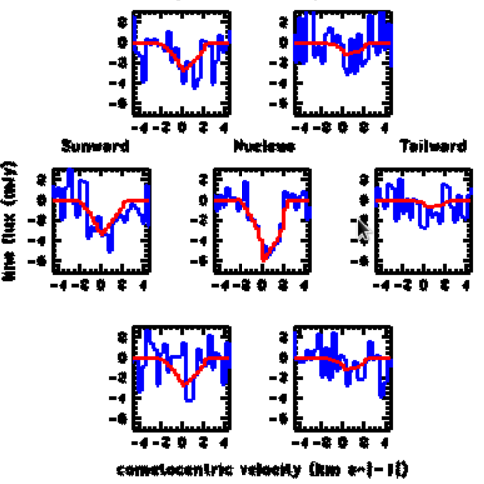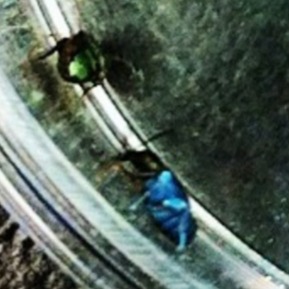About
Hi there! If you couldn't tell, my name is Aysha Rahman. I graduated from Agnes Scott College with a Bachelor of Science in astrophysics, and I'm passionate about both physics and tech.
Check out some of the projects I've worked on below — I'm always working on something new!
Research
Observations of the 18 cm OH Lines of 23 Comets

Observations of the 18 cm OH Lines of 23 Comets
What: This is research done with Dr. Amy Lovell from Agnes Scott College, modeling and mapping cometary coma kinematics based on observations of OH spectral lines from the Arecibo Observatory (rest in peace) and the Green Bank Telescope. Water molecules were modeled from the time of sublimation through photodissociation into OH ions to the destruction of the daughter OH molecules.
Why: Understanding the kinematics and evolutionary process of comets, which are some of the least evolved objects in our solar system, is critical to understanding the formation and conditions of the early solar system. Ground-based observations using the 100 meter Green Bank Telescope and 305 meter Arecibo telescope allow for mapping and modeling of the gas production rates and outflow velocities of 23 comets as they near perihelion.
How: We used VirtualBox to run programs on virtual machines using the Fedora distribution of the Linux operating system and used Octave and Gnuplot for analysis and graphing. The models were produced using Monte Carlo simulations of the sublimation of a million water molecules.
The poster was created for and presented at GRAM (Georgia Regional Astronomers' Meeting), and the presentation was created for a departmental seminar class at Clark Atlanta University.
Social behavior in Groups of Mating Male and Female Bean Beetles

Social behavior in Groups of Mating Male and Female Bean Beetles

What: This is behavioral biology research on male bean beetle (Callosobruchus maculatus) social behavior that I did in high school with Dr. Barbara Musolf from Clayton State University.
Why: Previous experiments with bean beetles showed that male bean beetles seemed not to show preference when interacting with other bean beetles. This experiment was done to determine what social behaviors male bean beetles performed and whether those interactions varied based on sex of the other beetles. We found that males spent most of their time mating with females, and when interacting with other males formed dominance hierarchies, which had not previously been studied in this species.
How: This was done with bean beetles bred in dishes of black-eyed peas. Beetles were then painted to distinguish them from one another and recorded for 4+ hours in a petri dish. We then played back the footage, recorded every instance of every type of interaction, and constructed ethograms.